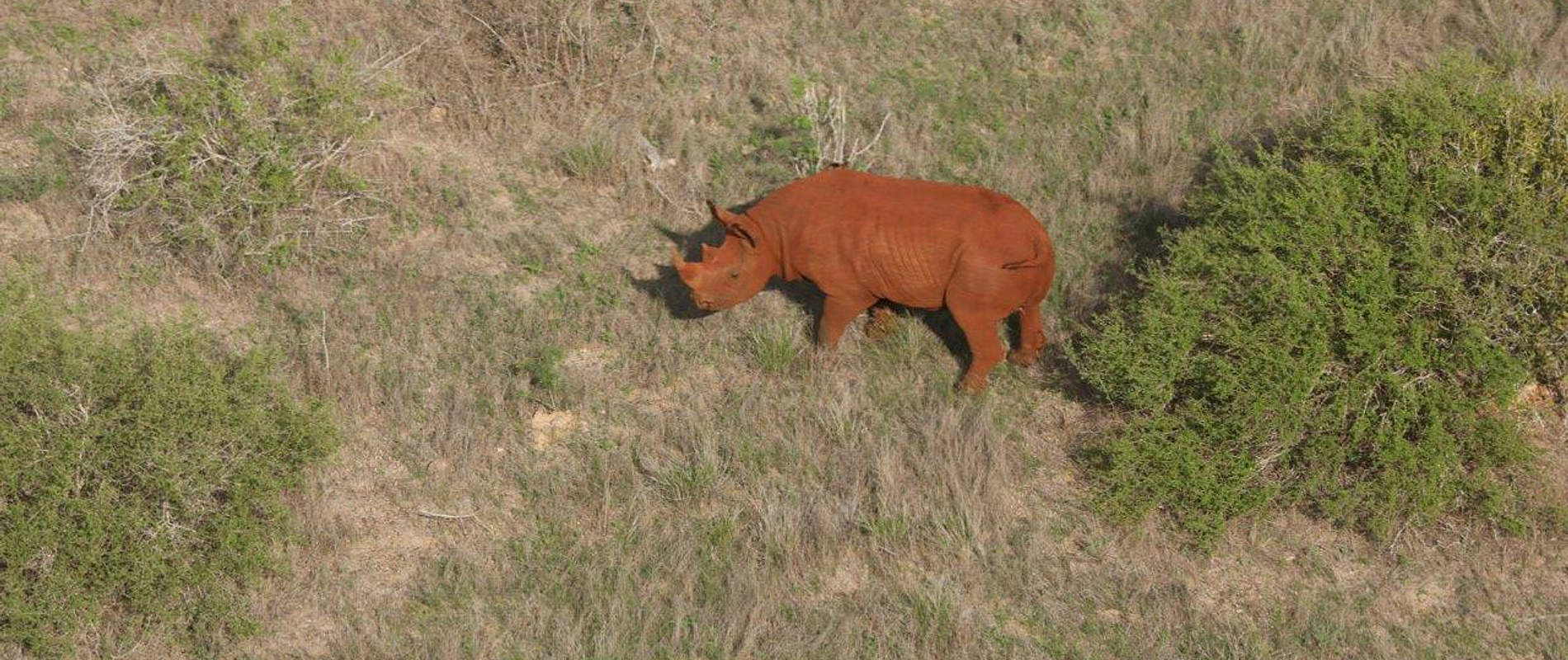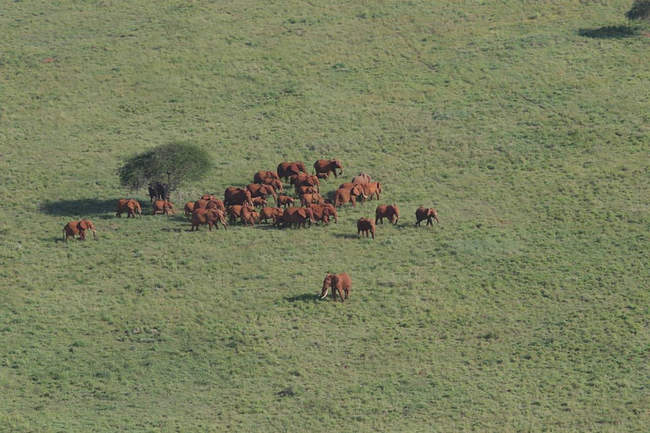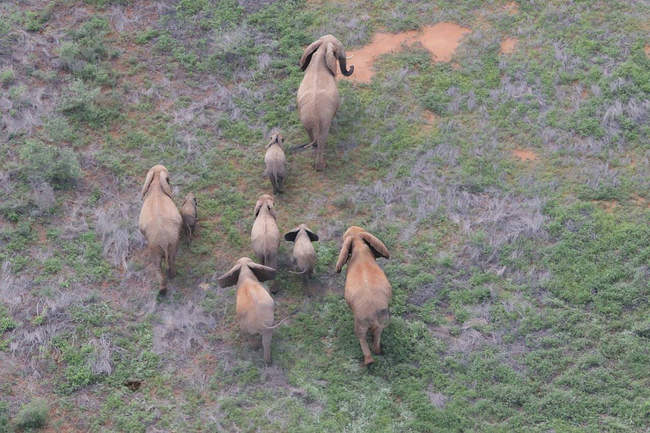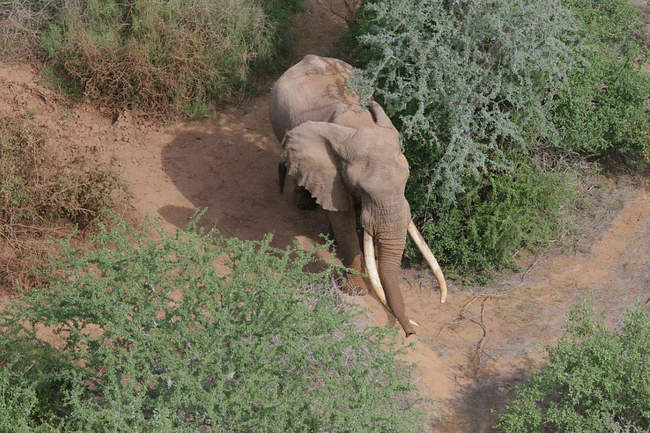Helicopter time in December was dominated by responses to incidents of Human-Wildlife Conflict (HWC), specifically conflict between people and elephants necessitating 12 callouts.
The majority of these cases were along the northwest fenceline of Tsavo East National Park where elephants are now more often travelling around the fence to the north and getting "stuck" on the wrong side. While most attempts to push elephants back through the fence were successful, there were a few groups of elephants that refused to cross over the threshold of where the fence had stood, before it was dropped.
The helicopter also attended to Human-Wildlife Conflict cases in the Sagala area, which is almost always a troubled area this time of year. On these occasions 3 herds totalling 32 elephants, 11 herds totalling 145 and 3 herds totalling 74 elephants, were pushed away from farms and into protected areas to the south. While these are large numbers of elephant to be dealing with, it is a reduction from previous years when up to 300 elephants were often found crowded around these same farms.
Towards the beginning of the month, the remaining livestock and their enclosures in the Chyulu Hills National Park were located and later removed by ground teams, and for the majority of the month the Chyulu Hills remained livestock free. In the north of Tsavo East, one small incursion of cattle was identified on the Tiva River, but these were quickly expelled by KWS.
Livestock in Tsavo West was prevalent, especially in the southern sector, with nearly 6,000 cattle counted in each of two areas and 11 cattle enclosures marked on one patrol in Kanjaro. Smaller numbers were detected in other commonly visited areas.
Only 2 charcoal kilns were located in December including 1 on KARI Ranch, and another in Tsavo East near Mtito Andei. Both were destroyed by ground teams. Patrols to the Mukomwe area on the northeast corner of Tsavo East at first found no new activity; however, towards the end of the month, fresh vehicle tracks were observed, along with a charcoal kiln in construction.

Sacks of charcoal located and recorded from the air, allowing ground teams to respond and confiscate
Coordinates were provided to KWS, to enable them to deal with illegal activity, before the cartel could become entrenched in the area once more.
No veterinary cases were attended to by the Aerial Unit in December, however, aircrafts were deployed on 5 occasions to search for injured animals that had been sighted either on the ground or in previous aerial patrols.
December was another month with very little poaching activity. One shooting blind was spotted on a helicopter patrol and a KWS investigation which reported buried ivory near the scene was also assisted by the helicopter, with nothing found. Suspect interrogations later concluded that the ivory had been dug up and moved. Two elephant carcasses were spotted from the air with ivory still intact and neither is thought to be poaching related. A third, old carcass was located near Ithumba, and although it is difficult to know, the carcass had been covered deliberately with branches and its ivory was missing, it was most likely poached. Due to the age of the carcass, it was impossible to conclude means of death.
Highlights for the month included sightings of lion, as well as a leopard with what appeared to be a fresh kill of an Egyptian Goose. Also sighted was a huge herd of buffalo numbering around 1,500 on Lumo Conservancy.




